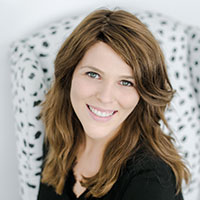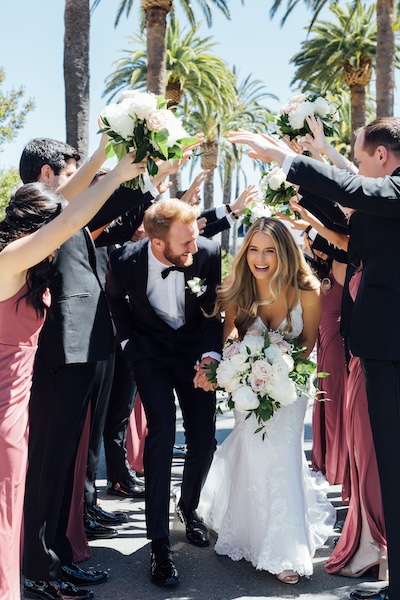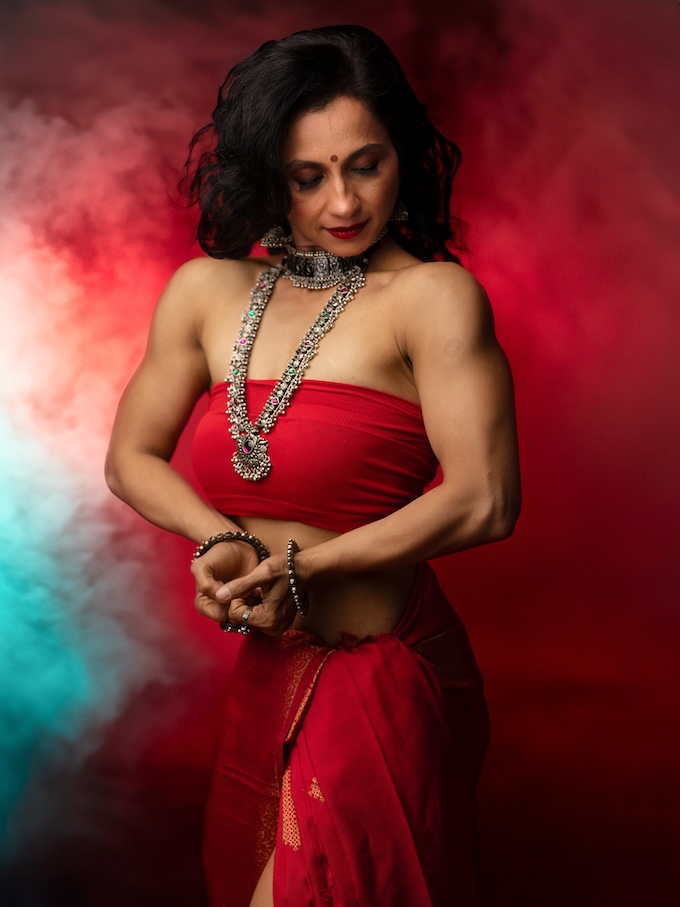Business + Marketing
How Wedding Photographers Use Instagram to Get Followers and Clients
May 7, 2019
Rangefinder senior tech editor Greg Scoblete moderating the panel “Social Media Madness” at our Rise + Shine business program hosted at WPPI in Las Vegas this past February. He was joined by (from left) Caroline Tran, Rebecca Yale, Brandi Potter and Eric Kelley.
For our first annual Rise + Shine program at WPPI 2019, the “Social Media Madness” panel had Rf 30 Rising Stars Caroline Tran (2012), Eric Kelley (2013), Brandi Potter (2018) and nominee/nominator Rebecca Yale share their approaches to building and sustaining a loyal following. Here is an excerpt of their conversation, edited for clarity and length.
RF: We know social media is important, but give us a sense of how you use it for your business.

Caroline Tran: I use social media as a way to connect with current clients, potential clients and my audience. It’s a way to show who I am, and by putting myself out there and being vulnerable, people feel more connected to that. I’m attracting like-minded people.

rebeccayalephotography.com
@rebeccayale
Rebecca Yale: I see social media as two-fold—first, as a portfolio. It’s the first place my clients are looking for my work. It’s also my brand identity. I see Instagram Stories as a chance to get a little personal. I struggled for a while about whether I wanted to be personal, professional or both. I found it too difficult to maintain two accounts, so I make Instagram professional and Insta Stories more personal.

brandipotterphoto.com
@brandipotterphoto
Brandi Potter: I try to be as personable as possible. I don’t want to put a lot of fake stuff out there. I feature every single client on Instagram because they all like to be featured.

Eric Kelley: We are in a place where things are changing everyday. What worked for me in 2012 to 2015 isn’t working for me now. Figuring out what makes it fun, enjoyable and showing the world a little bit of what I’m doing is my goal.
I keep my social media pretty much work-related. I look at my job a little bit as a performance. I tried a while ago to maintain multiple accounts, and it was too confusing. I didn’t like it. My audience on Instagram is mostly industry professionals, potential clients and past clients. I really appreciate Insta Stories since it gives me an opportunity to share things with people who don’t jive with my feed.
RF: How much of your following was built organically and how much was the result of any paid marketing on these platforms?
EK: I did a lot of collaborative shoots, sharing of other people’s work and hashtagging. I got the most out of tying my coattails to people in the industry who were tying their coattails to other people in the industry, and we pretty much all rose together. Mentioning people and sharing other people’s names and vice versa was probably the best way to grow.
RY: I started on Facebook in late 2010 and that was right when Instagram was starting. I would do a next-day preview and tag my clients, and they loved that. I always share five to ten digital previews. I don’t always put them on my feed because I may want to share them elsewhere, but I always share it on my Insta Stories and tag the client, and then when they share it, it comes from me. And that does help my growth.
The biggest thing that helped me to grow from zero to 10,000 followers was collaborations with influencers who were getting married. I feel like that doesn’t exist anymore. I also did takeovers with Style Me Pretty, The Knot and Martha Stewart Weddings, and that got me thousands of followers the first time. The second time I did a Style Me Pretty takeover a couple years later, I got a few hundred new followers, so it was a pretty marked difference, and I thought my photos were better the second time. Now, I think it’s slowly trickling in. I do use hashtags, but I feel my likes and engagement didn’t really change from that. I always try to like comments on my posts though and respond with more than three words to comments. I find that works well.
CT: I started on Facebook and I credit Facebook with the growth of my business. I did what Rebecca did: I would tag all of my clients on that and they would share it. I think being on Facebook early for business helped a lot.
BP: It’s never been my goal to have a huge following, but I’m getting a lot of followers from getting featured. And I do paid ads to get in front of clients. That gets me some real followers. I do use hashtags, but I try to use specific ones that I know clients are using so that I attract people who want to hire me—not just other photographers. I have paid for likes on my own images before to boost my own algorithm. It does boost engagement, but it’s honestly not worth it.
RF: Is it harder now to grow organically?
BP: I haven’t had a problem growing organically. Placing in Rangefinder’s 30 Rising Stars last year helped a lot, and I get featured quite a bit by Junebug Weddings, which also helps.
RY: I had a proposal that I shot become a meme, and a lot of people tagged me but I got like no followers from it. Growth is a lot harder than it used to be. I’ve done a couple of high-profile shoots recently, and people with millions of followers shared them. I hardly saw a bump.
EK: I’ve been in the 26,000 to 27,000 range for the past two years. I look at the engagement more, trying to figure out what my audience wants to see. I think one of the big things you have to figure out is when is the best time to post a photo, and then be on your phone for an hour or so—like the comment, comment back to comments with at least three or four words. Every time I’ve done that, I’ve seen a spike in engagement.
RY: And it helps with the algorithm. If it sees you responding, more people will see it.
CT: I’ve been experimenting with the opposite. I post before I go to bed, then I just sleep. I wake up the next morning and if the post does well, I leave it up, and if not, I archive it.
RY: Think about when you’re on your phone—it’s when you’re going to bed or brushing your teeth.
EK: I post at 10 p.m. and 1 p.m. Eastern Time. Starting my day with Instagram Stories has also been the best for my engagement. Part of the algorithm wants to see live things on your Stories. They reward you for doing Stories.
RY: And people really like watching them. They feel like it’s insight into our lives. I use Stories to show something behind the scenes. That’s something I’d never show on my feed. The way some people are using Highlights is absolutely incredible—you can create a sizzle for yourself.
RF: What are some of your do’s and don’ts of what you’re willing to show on your networks?
CT: I like sharing personal stuff. I’m passionate about fitness, lifestyle and motherhood, and balancing motherhood and business. Like Rebecca, I started putting my personal stuff in Stories. I do share personal stuff on the feed, but I try to keep it curated and within my aesthetics—and spread out, so when you come to my feed it’s not my face everywhere.
I do commercial work as well, and I choose to leave that out of my feed. My commercial clients don’t need to see my work on my website or Instagram. I also don’t need that many commercial clients. I’m trying to recruit brides and new moms for family pictures, so even though I shoot more than just that, I keep my website to just weddings and babies.
BP: I actually run four accounts. I have a personal account that I use for life stuff and dog photos. That’s mainly for my friends and family
who care about my day to day. I have a workshop account (@thisworkshopdoesntsuck) and a preset account (@brandipottereducation). I keep those two strictly professional. On my normal photo account, I will share personal things in my stories and in my captions, but it’s rare for me to show a non-wedding or couple-related photo in that feed.
RY: I talk about my politics in my Stories and my feed, and I have 100 percent lost weddings talking about my opinions and posting photos from marches. I was happy with that, and I got work from it too. But you have to understand that if you’re putting a strong message out there, you’re going to be polarizing, so be careful.
If you don’t have a mission statement for your business, write one. It will change your business. Write down who your ideal client is, and every single photo you post should be in service to that client. I was having a talk with one of my second shooters about a wedding we did and she said, “Your photos are so beautiful, why won’t you share them?” I didn’t because it was a very different style of dress and hair and makeup that doesn’t fit my ideal client, and posting that will turn off my ideal client.
BP: If I shoot a wedding with vendors or a venue that I don’t want to work with anymore, then I won’t blog that wedding. I’d rather have clients find me through SEO than social media. My clients like being featured on social media but they also really like when I blog—but I haven’t been doing it very often lately. Sometimes I’ll share five to ten photos of a shoot or wedding in my Stories and post a link to the blog, but not always.
EK: You should find some people that you aspire to be like and examine what they’re doing and what’s working and not working for them. I always ask myself, what is Ford or another big company doing? Are they posting about their dogs? I want as many people to see my photos as possible. I’m not going to talk politics and I’m not going to talk about religion.
RF: Do you post at set times a day? Do you make it a regular part of your day?
CT: I know you’re supposed to use Planoly, but I’m very off-the-cuff. My Instagram is what I’m feeling at the moment. I do aim for one post a day. In an ideal world, I would post it in the morning. You find what fits into your lifestyle and stay consistent—that’s the most important part of it.
RY: I do use Planoly. I plan out the photos but not the captions, and I’m very personal in my captions.
BP: I’m very Type B and don’t like planning things because I don’t know how I’m going to feel that day. I pick photos based on how I feel, and I don’t post every single day because sometimes I don’t feel like it. I don’t want social media to rule any part of my life, so not dedicating a set amount of time to it is key for me to be able to balance it all. I would never be able to use an app like Planoly.
EK: I have a new system using the Tailwind app. I paid $120 to buy the pro account for Pinterest and Instagram, and it bumped my monthly followers on Pinterest from 3,000 to 29,000. It will tell you three or four times a day that are ideal to post for you, and you can post photos between Pinterest and Instagram. It’s pretty amazing.
RF: Would your business be the same if social media disappeared?
BP: Yes. I care more about SEO than I do about social media because followers don’t determine my worth as a photographer, and they also don’t bring in as much work as Google. I want people to find me on Google because Google is not going away anytime soon. If all social media went away, I would be so happy.
RY: I don’t get clients from Instagram. If you’re a photographer selling things to other photographers, if you’re selling a product, get a mailing list. Your mailing list is your currency, not your following. It’s miniscule how many people see your work on social media.
CT: I would agree that email has the highest conversion rate. I tried it for clients, but it didn’t help because I’m at a low volume and high price point. In 2018, the majority of my bookings came from planners or from venues directly.
EK: I’ve been working really hard on building physical relationships with people. Planners are now my number one source for booking weddings. Instagram is my number one source of inquiries. Because I’ve built a network of established relationships with people that I can hang out with, it could go away.
Related: How to Keep Up With the Ever-Changing Social Media Algorithms
7 Facebook Mistakes You Don’t Want To Make
Six-Figure Wedding Photography: 4 Easy SEO Tips to Grow Your Wedding Photography Business





